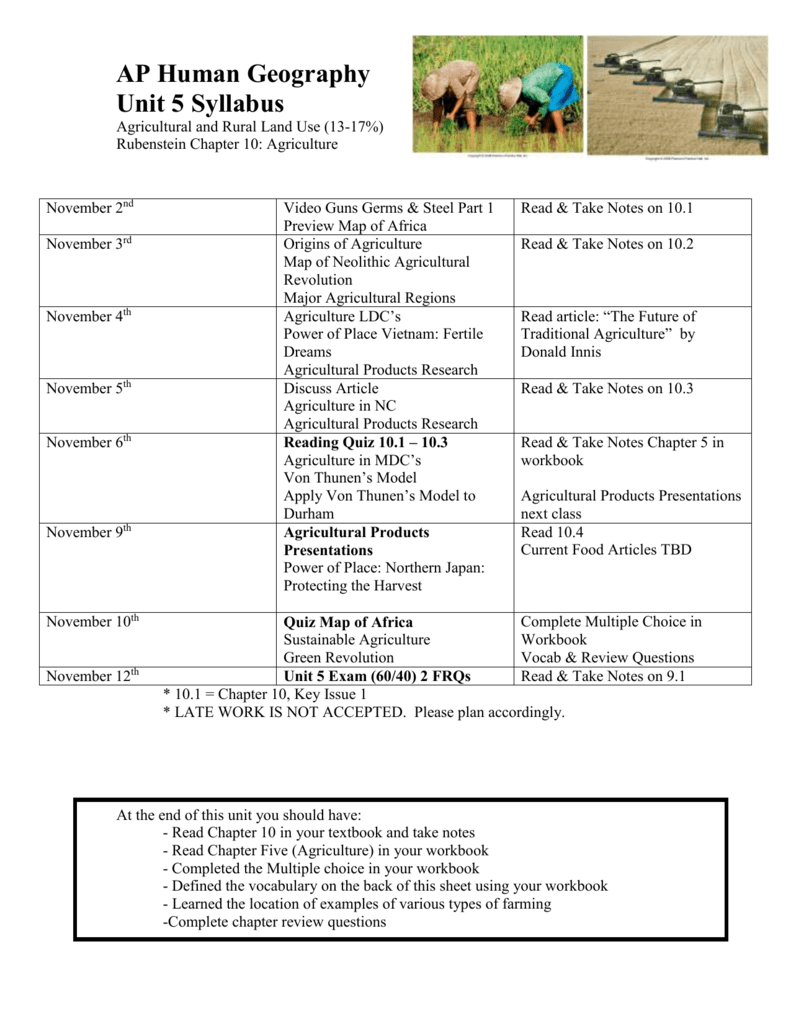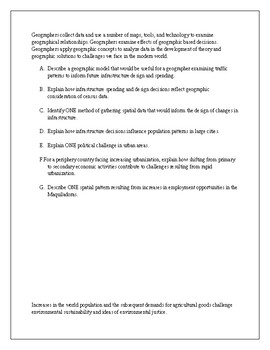

#Ap human geography tests unit 3 how to
How to characterize and analyze changing interconnections among places.How to define regions and evaluate the regionalization process.How to recognize and interpret at different scales the relationships among patterns and processes.How to understand and interpret the implications of associations among phenomena in places.How to use and think about maps and geospatial data.Major geographical concepts underlying the geographical perspective: location, space, place, scale, pattern, nature and society, regionalization, globalization, and gender issues.Unit I Geography: Its Nature and Perspectives.Listen to this clip comparing the education system in Poland, South Korea, Finland and the US. The 100% AmericanĮducation is also a major part of culture. Let's visit **Places** and **Regions** from my Urban Challenge and Promise site to see how these two factors interact within the City of Chicago. The cultural landscape of a region is the convergence of its human and physical features. Read explanation of the relationship between culture, geography, and the landscape by Dr. The term cultural landscape refers to the effect culture has had on the land itself. As you look at the slides and read the captions, keep in mind that these styles of dress developed for both practical and traditional reasons. Take a look at this slideshow of folk dress from Professor Dale Lightfoot at Oklahoma State University. In places where the folk culture is still strong, what a person wears reveals a great deal about their cultural background. Raymond Sanders of the University of Texas at Austin. To better understand the difference between the two let's view a presentation on folk culture by Dr. For most urban Americans, there is no difference between folk culture and popular culture. Popular Culture, on the other hand, is the consumerist, media driven culture that pervades our daily life. You can think of Folk Culture as the knowledge and traditions that grew out of a people's unique history and experiences. Culture can be broken into two broad categories: Folk Culture and Popular Culture. This week, we will begin to do just that. In the introduction to this unit, we saw that culture is a very difficult thing to narrow down and define. In both places, what people think, believe and value has had a profound influence on the landscape surrounding them. It can be as large and impressive as the Chicago skyline or simple as the miles of cornfields through the Illinois prairie.

This "cultural landscape" can take many forms and is reflected in both rural and urban settings. Often, this is visible right on the land itself. Language: the most important because it is the cement of cultureĪll of these combine to shape the environments in which people live.

Social Organizations: Includes the government and social institutions of a peopleĪttitudes Toward the Unknown: includes religion, science, and magicĪrt: includes graphic art, folklore, and music Material Culture: the tools, technical skills, and economic systems of a people Larson then breaks it down into the following five categories: He defines culture as the "Attitudes, objectives, and technical skills of a people." In other words, culture refers to the accumulated knowledge of a people.īecause this is still too broad, Dr. Al Larson of the University of Illinois at Chicago. One of the simplest definitions I've seen is from Dr. The reason for this is that culture is such a huge and unwieldy thing. Even the geography textbooks you read will have different definitions. If we were to compare our definitions, I'm sure we'd see some very different answers.


 0 kommentar(er)
0 kommentar(er)
